In everyone’s impression, although both are OLED screens, domestic screens seem to be inferior to Samsung screens. As for where exactly the difference lies, aside from relatively professional parameters like color performance and brightness, many people mention pixel arrangement. Today, I will take you to explore the secrets behind pixel arrangement. The images on our mobile phones are composed of individual pixels, and each pixel is made up of three sub-pixels (RGB). Different brightness levels combine to create different colors. The standard RGB arrangement is the most common pixel arrangement on LCD screens, which divides a pixel into two sub-pixels arranged side by side, filtering the white light from the LCD backlight module through red, green, and blue color filters to form the corresponding red, green, and blue sub-pixel arrangement.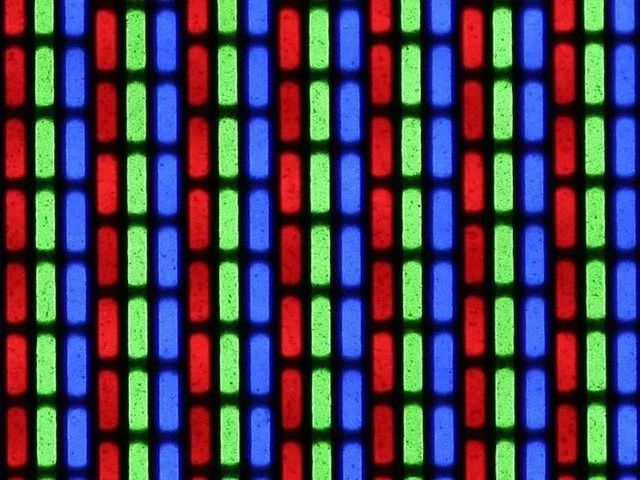 RGB arrangement is hoped by many technology workers to innovate and break through the industry peak, for the benefit of the nation… Although somewhat unclear, I still managed to read it through? The visual experience is quite remarkable, and the price is not too high, but is it hard to understand? In the early days of OLED screens, many products indeed used RGB arrangements, but due to the differing lifespans of the red, green, and blue sub-pixels, the lifespans of the red and blue sub-pixels are relatively shorter, especially for blue. If the RGB arrangement continues to be used, it will significantly affect the lifespan of the screen. As the leader in the AMOLED panel industry, Samsung developed the Pentile arrangement to solve the screen lifespan issue, named for its diamond-shaped arrangement of sub-pixels. Unlike the standard RGB arrangement, each pixel in the Pentile arrangement is composed of red, green, and blue-green sub-pixels, where the green pixel is complete, while the red and blue pixels are reduced by half compared to the traditional RGB arrangement, resulting in a total sub-pixel count reduction of about one-third.
RGB arrangement is hoped by many technology workers to innovate and break through the industry peak, for the benefit of the nation… Although somewhat unclear, I still managed to read it through? The visual experience is quite remarkable, and the price is not too high, but is it hard to understand? In the early days of OLED screens, many products indeed used RGB arrangements, but due to the differing lifespans of the red, green, and blue sub-pixels, the lifespans of the red and blue sub-pixels are relatively shorter, especially for blue. If the RGB arrangement continues to be used, it will significantly affect the lifespan of the screen. As the leader in the AMOLED panel industry, Samsung developed the Pentile arrangement to solve the screen lifespan issue, named for its diamond-shaped arrangement of sub-pixels. Unlike the standard RGB arrangement, each pixel in the Pentile arrangement is composed of red, green, and blue-green sub-pixels, where the green pixel is complete, while the red and blue pixels are reduced by half compared to the traditional RGB arrangement, resulting in a total sub-pixel count reduction of about one-third.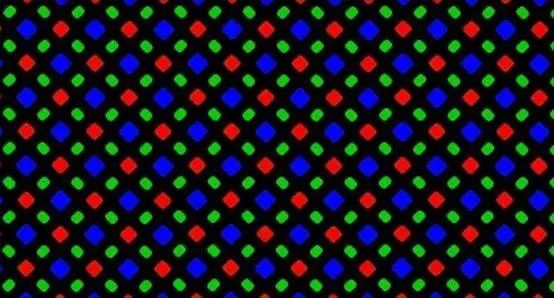 Pentile Arrangement In early AMOLED screens, due to relatively low pixel density, the Pentile arrangement could cause a significant graininess on the screen. However, with technological upgrades and continuous improvements in pixel density, AMOLED screens using the diamond-shaped Pentile arrangement no longer have this issue. Although the Pentile arrangement is good, due to Samsung’s patent restrictions, domestic manufacturers cannot directly use this arrangement. Therefore, companies like BOE, Visionox, and Tianma have introduced two pixel arrangement methods in the early stages: 2 in 1 arrangement and RGB Delta arrangement. The former is mainly used by BOE, characterized by the green sub-pixel being split into two smaller parts. This pixel arrangement method has the same number of RGB sub-pixels, but the number of pixels for each color is reduced by one-third. Six sub-pixels share one surrounding pixel, resulting in a lower actual resolution, and compared to Samsung screens at the same resolution, the jagged edges are more noticeable.
Pentile Arrangement In early AMOLED screens, due to relatively low pixel density, the Pentile arrangement could cause a significant graininess on the screen. However, with technological upgrades and continuous improvements in pixel density, AMOLED screens using the diamond-shaped Pentile arrangement no longer have this issue. Although the Pentile arrangement is good, due to Samsung’s patent restrictions, domestic manufacturers cannot directly use this arrangement. Therefore, companies like BOE, Visionox, and Tianma have introduced two pixel arrangement methods in the early stages: 2 in 1 arrangement and RGB Delta arrangement. The former is mainly used by BOE, characterized by the green sub-pixel being split into two smaller parts. This pixel arrangement method has the same number of RGB sub-pixels, but the number of pixels for each color is reduced by one-third. Six sub-pixels share one surrounding pixel, resulting in a lower actual resolution, and compared to Samsung screens at the same resolution, the jagged edges are more noticeable.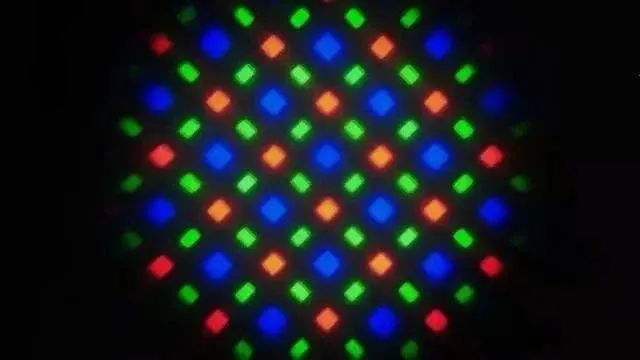 2 in 1 Arrangement The RGB Delta arrangement used by Visionox and Tianma is similar to the Pentile arrangement, but the number of red, green, and blue sub-pixels is the same. However, compared to the standard RGB arrangement, the number of sub-pixels for each color is reduced by one-third, with each pixel arranged in R-G, G-B, or B-R. Six sub-pixels share one surrounding sub-pixel, resulting in an actual pixel density further reduced compared to Pentile, approximately only 60-70% of the standard RGB arrangement.
2 in 1 Arrangement The RGB Delta arrangement used by Visionox and Tianma is similar to the Pentile arrangement, but the number of red, green, and blue sub-pixels is the same. However, compared to the standard RGB arrangement, the number of sub-pixels for each color is reduced by one-third, with each pixel arranged in R-G, G-B, or B-R. Six sub-pixels share one surrounding sub-pixel, resulting in an actual pixel density further reduced compared to Pentile, approximately only 60-70% of the standard RGB arrangement.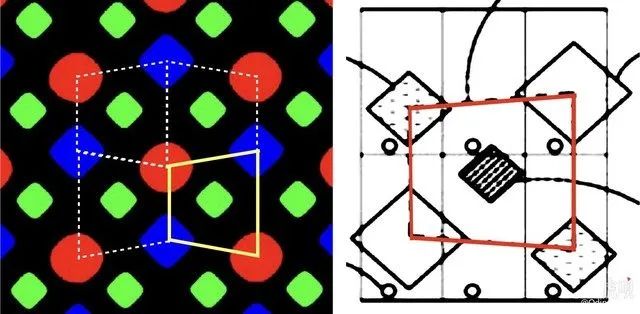 RGB Delta Arrangement It can be seen that the two main pixel arrangement technologies used in early domestic OLED screens have varying degrees of decline in pixel density compared to Samsung screens, which is the root cause of consumers’ poor perception of domestic OLED screens. However, domestic manufacturers have not given up, and through continuous technological breakthroughs, domestic OLED screens have made significant progress in pixel arrangement. For example, the Pearl arrangement by CSOT and the Ding-shaped arrangement by Visionox can now achieve a visual experience close to that of the Pentile arrangement. Let’s take a closer look. The Pearl arrangement is an exclusive technology of CSOT. Similar to the diamond arrangement, each pixel is composed of R-G and B-G, with the G sub-pixel being the real pixel, while the R and B sub-pixels are reduced by half compared to the standard RGB arrangement. To further extend the lifespan of OLED panels, the Pearl arrangement changes the shape of the sub-pixels to an arc, breaking the patent restrictions of the diamond Pentile arrangement.
RGB Delta Arrangement It can be seen that the two main pixel arrangement technologies used in early domestic OLED screens have varying degrees of decline in pixel density compared to Samsung screens, which is the root cause of consumers’ poor perception of domestic OLED screens. However, domestic manufacturers have not given up, and through continuous technological breakthroughs, domestic OLED screens have made significant progress in pixel arrangement. For example, the Pearl arrangement by CSOT and the Ding-shaped arrangement by Visionox can now achieve a visual experience close to that of the Pentile arrangement. Let’s take a closer look. The Pearl arrangement is an exclusive technology of CSOT. Similar to the diamond arrangement, each pixel is composed of R-G and B-G, with the G sub-pixel being the real pixel, while the R and B sub-pixels are reduced by half compared to the standard RGB arrangement. To further extend the lifespan of OLED panels, the Pearl arrangement changes the shape of the sub-pixels to an arc, breaking the patent restrictions of the diamond Pentile arrangement.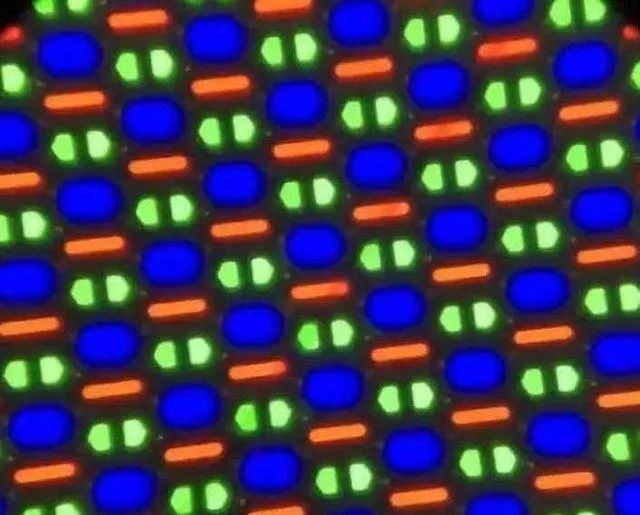 Pearl Arrangement The Ding-shaped pixel arrangement by Visionox consists of sub-pixels made up of isosceles trapezoids, resembling the side view of a tripod from the Bronze Age. This pixel arrangement is named after this resemblance. This arrangement can provide a visual experience similar to the diamond Pentile arrangement while improving the light transmittance of the under-screen camera and enhancing the photo quality of the front camera.
Pearl Arrangement The Ding-shaped pixel arrangement by Visionox consists of sub-pixels made up of isosceles trapezoids, resembling the side view of a tripod from the Bronze Age. This pixel arrangement is named after this resemblance. This arrangement can provide a visual experience similar to the diamond Pentile arrangement while improving the light transmittance of the under-screen camera and enhancing the photo quality of the front camera.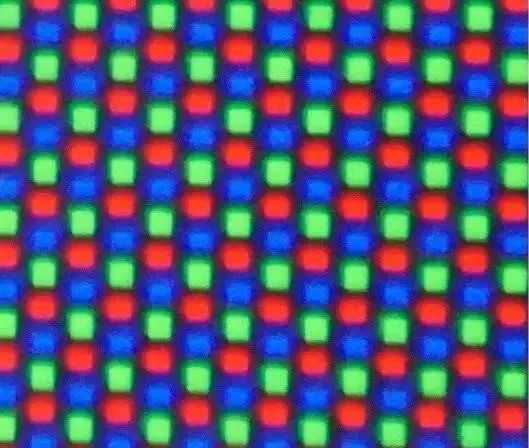 Ding-shaped Arrangement As can be seen, with the continuous efforts of domestic panel manufacturers in technology, domestic OLED screens are gradually approaching industry-leading levels in quality and display effects. The actual products are already sufficient to meet user needs.
Ding-shaped Arrangement As can be seen, with the continuous efforts of domestic panel manufacturers in technology, domestic OLED screens are gradually approaching industry-leading levels in quality and display effects. The actual products are already sufficient to meet user needs.

Shenzhen Longgang Intelligent Audio-Visual Research Institute
Artificial Intelligence | Ultra HD
Industrial Innovation | Technology Incubation | Achievement Transformation